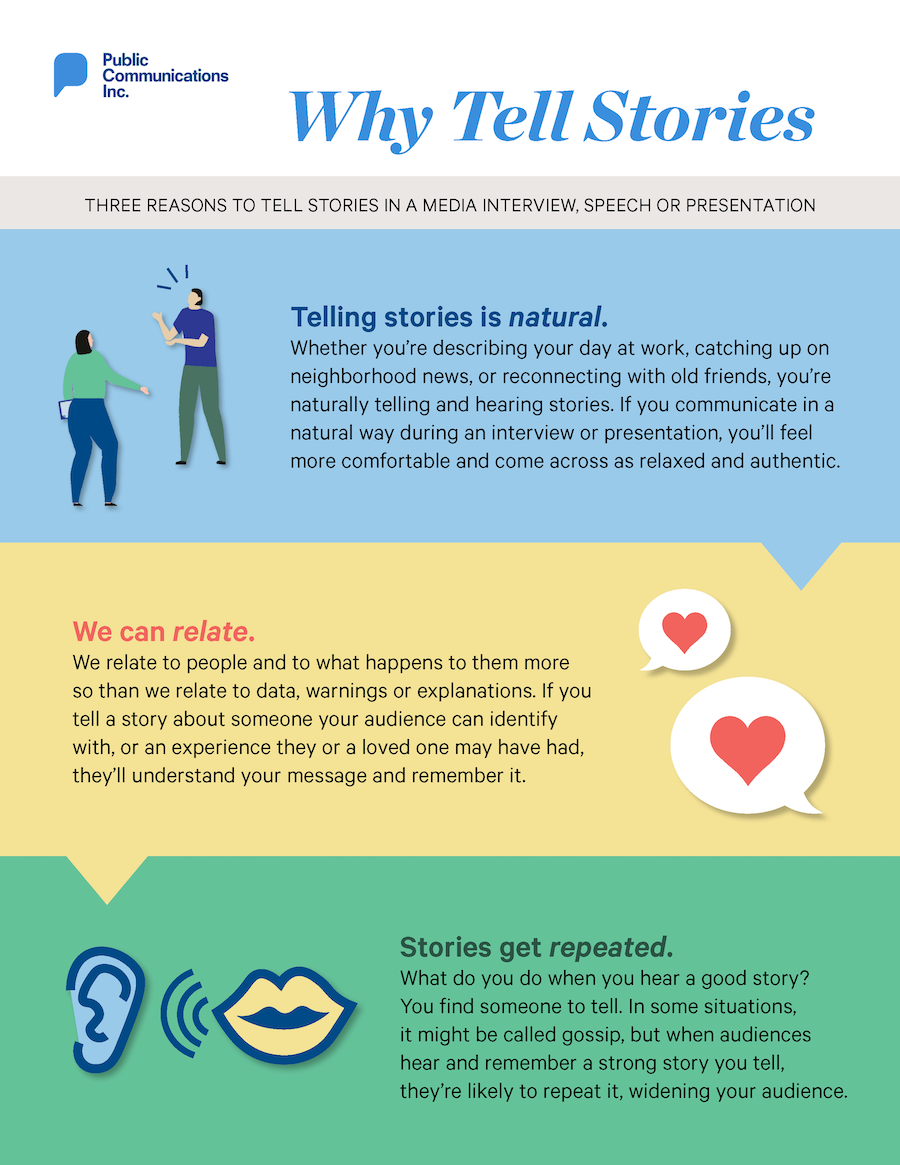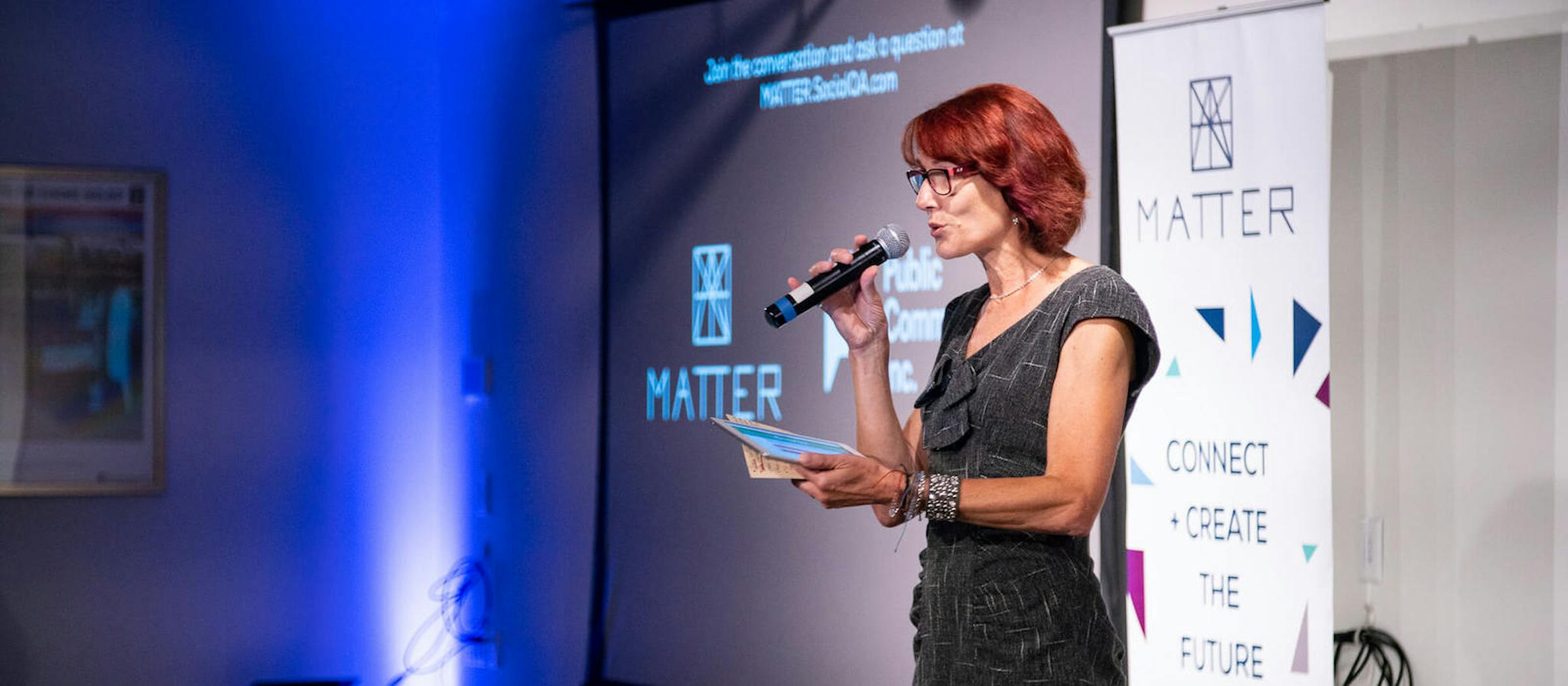What is brand essence — and why does it matter for startups?
A conversation with Public Communications Inc.
This post was originally published on March 10, 2020 and updated on April 26, 2021.
Each day in the life of an entrepreneur is filled with competing questions.
Do we need to hire more people? Who’s going to buy our product? How long is our runway?
Because so many of those questions seem to demand an immediate answer, it’s easy to save the ones that feel less urgent, like “What is our brand essence?” for another day. But the startups that take time to focus — and focus early — on solving this crucial part of the brand identity puzzle will find that they’re actually better equipped to tackle many of those other competing questions.
We’ve teamed up with our partners at Public Communications Inc., a national communications and marketing agency for more than 50 years, to host a MATTER workshop series that will take a deep dive into the concept of brand essence, messaging and value proposition.
Last year, we sat down with three brand communications experts: Mary Erangey, senior vice president at PCI, Alyssa Paldo, former account supervisor and Caitlin Blum, former assistant account executive. They gave us great insights on the basics of brand essence, why it matters and tips for getting started.
How is brand essence defined?
Mary: “Let’s start with what it’s not.
“Brand essence is not your logo, your tagline, your colors, etc…. The beauty of brand essence is that it’s the sum of what people think and feel about your company. It connects what you do and provide with the values and emotions that are at the very heart and soul of what you are.”
Alyssa: “I can share a great example that ties brand essence to the development and articulation of value proposition. We were working with MATTER member and surgical mesh startup, Surgical Innovation Associates (SIA), asking questions to help get to the heart of the SIA brand identity for a product publicity launch. During that discussion, SIA’s founder made a comment that became a lightbulb moment for all of us. We had talked a lot about what SIA does, about its surgical mesh product, DuraSorb, and the inspiration behind the company. But when the founder, Alexei Mlodinow, described the product as being in the ‘Goldilocks zone’ — meaning there just long enough to provide support during the post-surgery healing process and then it dissolves before it would typically start to create complications. We all said ‘There it is; that’s the big differentiator.’ That became the value proposition language that we used to tell the essential story of SIA. In taking the time to discover SIA’s brand essence, we helped articulate its value proposition in language that made sense and made people care.”
Where does brand essence fit into an overall brand strategy?
Mary: “For this purpose, let’s think of your brand as a tree. At the heart of that tree is the core and the taproot — that’s your brand essence. And then what you do is build all of those other things, including value proposition, message framework and your strategic marketing communications plan, around it.
“Brand essence allows you to create consistency, continuity and authenticity. Having it defined and taking the time to do that — instead of charging ahead into product planning and marketing specifics — helps to ensure that your product positioning connects very specifically to your brand essence. And when you do branch out to the next phase of marketing and messaging, even down to the colors that you choose, it all draws its life and evolution from the central force.”
Why does defining brand essence matter?
Mary: “For startups in particular, the founder may individually have an idea about how their brand is perceived or how they want it to be perceived. But when they try to articulate it, it may not be as clear as they thought. Even more than that, other leaders within the organization may see the brand’s essence differently.
“We’ve discovered that if you get people in a room together and you start doing simple exercises like, ‘Say the first three words that you associate with your company’, you start to go around the room and find the patterns and similar themes. You also find where there’s divergence.”
Caitlin: “Look at PCI, for example — we have 45 employees who work with a wide array of clients spanning various industries, performing many different roles. So how do we talk about PCI to our families, our friends and our clients in a unified way? How do we clearly articulate what we do and break that down into the simplest of terms? PCI has been around for over 50 years, but we still continue to update and refresh our brand messaging as we grow and evolve in the marketplace.”
Mary: “Our messaging challenges are not so dissimilar from the challenges that healthcare startups face. Even though PR communications isn’t super sophisticated in terms of science or technology, it is often misunderstood and it is always evolving. So to tell our brand story, we have to break down what PR actually is and talk about it in simple terms that people will relate to — things like, ‘We help our clients find and tell their stories to the audiences that matter to them.’ That’s a very simple concept. And then we go even further and share anecdotes to bring that essential description to life.
 Infographic: Three Reasons to Tell Stories in a Media Interview, Speech or Presentation
Infographic: Three Reasons to Tell Stories in a Media Interview, Speech or Presentation
“For startups, whether they have two employees, 10 or 20, those employees are that startup’s very best brand ambassadors. Having brand essence defined is part of what allows employees to connect with that brand so they can own it and take it out into the world.”
How early should a company start thinking about defining their brand?
Mary: “At the very beginning!
“There is a PR concept called the PESO model (Paid-Earned-Social-Owned) which is used to frame integrated communications. A fairly recent development is to apply that integrated PESO model based on company growth stage. So, for example, at the startup stage your company will really need to focus on “Owned” communications such as positioning, messaging and core presentation materials. Those early, high priority things — their website with their positioning statements for example — are really defined by their brand essence.
“This application of strategic communications continues to evolve through every stage of company growth, from startup to changeup to scale-up to grownup. But at every stage, your communications and marketing strategy and materials should be built on a framework that stems from your brand essence.”
Caitlin: “And I would add that defining brand essence starts at the beginning, but don’t be afraid to reassess and refresh as your company grows.
“Depending on who you’re talking to — your family, an investor, a potential customer, your employees — do your key messages need to change at all? Or is the goal to have something universal?”
Mary: “Having a defined brand essence allows you to tailor it appropriately to whatever audience it is you’re speaking with.
“So for example, one of our healthcare clients: As a company, they provide infusion therapy and they have gone through numerous business transformations. Through that evolution, they need to be talking to a wide variety of audiences, from patients and prescribers, to payers, drug manufacturers and hospitals. By distilling their brand essence, and positioning themselves to be the infusion provider of choice that is reimagining the future of infusion care, they can take that message and then say what that means to a manufacturer, or what it means to a hospital contact or to a caregiver. That essence allows them to stay true to the core brand identity while explaining what it means differently to each audience.”
What would you tell a company that might be thinking to themselves, ‘I don’t know if this brand stuff is really for me’?
Mary: “I think all they have to do is think about their own experiences in terms of how they connect with the products and services that they choose to use. Whether you’re a business-to-business or a consumer-facing company, today’s consumers and customers are making choices based on more than just product and price. They are making choices based on values and based on an emotional connection to your brand.”
What are some common mistakes that companies make when doing this work?
Mary: “Not taking the time to get in a room and do this. One of the biggest pieces of advice that I would offer is: Get the right people in a room, get vocal about your perceptions and get aligned.”
Alyssa: “It’s also important to understand outside perspectives. Talking to people outside your company can open the door to things that you didn’t think of because you’re so deeply embedded and invested in the work. To somebody outside, they might have questions or perspectives that you didn’t consider.”
Caitlin: “The last thing I would add is that brand essence is not just operational, it’s aspirational. It’s more than just what you’re doing day-to-day.
“And if you get too caught up in the day-to-day and you don’t take the time to do this, you may end up with a fractured identity. Not getting aligned early and then later needing to deal with things like crisis communications causes a lot more stress for everyone involved, rather than sitting down and taking the time to talk it through and make sure you’re all aligned from the start.”
Mary: “Yes. So you asked earlier about when is the right time to start doing this and we said right at the beginning — but it’s also never too late!”



